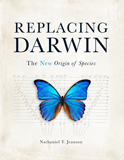
A Response to “Talking Science as Christians”
On June 5, 2018, a self-described Christian and professor of chemistry1 published a provocative blog post titled “Talking Science as Christians.”2 The author, “RJS,” under the guise of offering advice from a career in science, took young-earth creation (YEC) to task and sharply rebuked it. This post was given additional publicity by the “SEBTS [Southeastern Baptist Theological Seminary] Alumni” Twitter account on June 24. How should Christians—and Southern Baptists in particular—respond?
Since RJS accuses YEC advocates of quote-mining, let’s begin our discussion by giving RJS a fair hearing. I will quote directly from RJS’s article, and then intersperse my comments. I apologize in advance for the length of this post, but my goal is to give RJS’s comments as much context as possible.
RJS begins with a compelling introduction:
How to talk about science and faith . . . or perhaps, and more important, how not to talk about science and faith. Here are some thoughts from 50+ years as a Christian involved in a range of churches, and from 30+ years as an active scientist, 26 years as a professor.
This is an impressive resume—and should cause anyone to sit up and pay close attention. Having not yet reached the age of 40, I personally am very keen to hear RJS’s insights from RJS’s years of experience.
In our current age of “fake news,” RJS’s first piece of advice is timely.
1. Make Sure Your Facts are Straight.
I agree whole-heartedly.
RJS then takes a swipe at YEC:
There is no scientific controversy about the age of the earth. It is old, far older than 10,000 years. The few scientists who doubt this almost invariably do so for religious reasons, with Christianity being the most common. If you feel that the Bible teaches a young earth and thus hold this position, at least be honest in the way you approach it.
Given the central importance of RJS’s first point, I find this illustration ironic. The history of young-earth creationism3 as well as the resumes and professions of current YEC proponents are readily available.4 A very simple survey of this literature would have revealed the numerous errors in this paragraph.
The history of young-earth creationism as well as the resumes and professions of current YEC proponents are readily available.
For example, consider the history of YEC. Nearly all participants in the origins debate—whether creationists or evolutionists—point to the 1961 book The Genesis Flood as the catalyst for the modern YEC resurgence. One of the coauthors of this book, Henry Morris, had a PhD in hydrology. Morris was also a professor at a mainstream university—Virginia Tech. In fact, for a time, he was chair of the engineering department. This is not the sort of pedigree that fits the stereotype of YEC proponents as scientifically illiterate Bible-thumpers.
As another example, two years after the publication of The Genesis Flood, the Creation Research Society was founded. This organization commenced for the purpose of facilitating scientific dialogue among professional scientists who dissented from the consensus views on the age of the earth and on evolution. Again, this doesn’t fit the assertion that “the few scientists who doubt this almost invariably do so for religious reasons.” Science has played a big role in the views of public, professional YEC proponents.
A survey of the book titles over the last 50 years from leading YEC organizations underscore this conclusion. For example, consider these titles:
- Evolution: The Fossils Still Say No! by Duane Gish, PhD
- The Young Earth: The Real History of the Earth: Past, Present, and Future by John Morris, PhD
- Scientific Creationism by Henry Morris, PhD
- Footprints in the Ash: The Explosive Story of Mount St. Helens by John Morris, PhD, and Steven Austin, PhD
- Earth’s Catastrophic Past: Geology, Creation, & the Flood by Andrew Snelling, PhD
In fact, just this past fall, I published the landmark book Replacing Darwin: The New Origin of Species in which I spend 10 chapters arguing from science that evolution is being replaced. Even a brief perusal of this book would make this fact manifest. If nothing else, RJS could have consulted the critical review (that we published on our website); RJS would find little discussion of Bible verses on the part of my critic (or in my rebuttal)—but extensive arguments over science.
Finally, for decades, YEC scientists have maintained peer-reviewed science journals, conducted original scientific research, and published highly technical books on the results of these laboratory and field experiments. Among the leading scientists at major YEC organizations, scientific preoccupation is a nearly inescapable fact.
Why would RJS omit these facts? I’m troubled that the illustration for RJS’s first point, “Make Sure Your Facts are Straight,” is replete with such blatant misrepresentations.
RJS expounds on the opening critique of YEC:
Ridiculous and easily falsified claims will undermine your credibility with anyone who happens to check, or who is exposed to science in more detail in the course of their education. Make sure you understand any science you use to support your position. Too often scientific results are twisted to support a young earth when, in fact, they say nothing about the age of the earth.
Since RJS doesn’t seem to be familiar with the long history of creation science, I wonder what instances of “twisting” RJS has in mind.
RJS continues,
Don’t take quotes out of context, don’t misrepresent and misinterpret others to “proof-text” your position. More damage is done by the way the position is defended than by the position itself.
Again, I agree with RJS’s advice. And, again, in light of RJS’s critique of YEC, RJS would seem to do well to heed RJS’s own advice.
More from RJS:
Don’t accuse those who are Christians and scientists and who hold to an old earth (the vast majority) of bowing to materialism or trying to curry favor with the establishment unless you truly understand the evidence and can offer a coherent explanation of why the evidence points in a different direction.
As Darrel Falk of BioLogos5 can personally attest, I am intimately familiar with the arguments for evolution. Before our panel discussion at the Evangelical Theological Society (ETS) meeting in November of 2015, we had a four-hour lunch together. Near the end of our lunch, Falk decided to tell me the evidences for evolution that he was going to share at the ETS meeting. As Falk would start his argument, I would join him and then finish it—because I regularly read the publications of my opponents.
In contrast, RJS shows no evidence of having read the technical publications of YEC scientists. Does RJS truly understand the evidence proffered by YEC scientists? The absence of references in RJS’s article is telling.
RJS takes another swipe at YEC:
If you are getting your scientific facts from resources provided by a creationist organization, please double check them. Find out why those of us who are Christians and scientists find this information misleading, incoherent, wrong, and even occasionally deceitful. Joel Duff at Naturalis Historia explains much of this quite carefully from the perspective of a Christian and a biologist.
This is another ironic illustration of RJS’s point. Of all the opponents of YEC, Joel Duff has repeatedly demonstrated poor scholarship. At Answers in Genesis, we have already documented some of the most glaring examples of shoddy work on his part (in his field of expertise, no less!). If RJS were familiar with the YEC literature, I think RJS would have thought twice before citing Duff.
Incidentally, despite Duff’s large volume of anti-YEC blog posts on Naturalis Historia, Duff has not published a single critique of my book Replacing Darwin, and he has hardly attempted a robust rebuttal of any of my several technical research papers. Duff has publicly acknowledged my book; Duff has also publicly acknowledged my technical explanation for the origin of species. But Duff has not published a serious critique of it—despite Duff’s PhD training in biology. This silence is telling. Perhaps the “scientific facts from resources provided by a creationist organization” aren’t so erroneous after all.
RJS clarifies the “acceptable” options for YEC proponents:
The only scientifically coherent approach to “Young Earth” is to postulate a mature creation with the appearance of age. Personally I think this position has theological problems and misinterprets the purpose and role of Scripture in Christian faith. I don’t think Scripture is intended to set us straight so that we know that the appearance of age in the world is an illusion, but others see things differently. We can have this discussion.
This sweeping statement contains no attempts to engage any of the actual scientific arguments that YEC scientists have put forth. Many YEC astronomers reject aspects of “appearance of age,” and YEC geologists have little use for the concept. Instead, they’ve built a robust, scientifically coherent explanation for geologic features from a YEC perspective.
The next three points of advice from RJS deal with nuances in evolution and in philosophy. For sake of space and relevance, they aren’t significant enough to engage in this post. Furthermore, they seem to be written as if Replacing Darwin doesn’t exist. I see no point rehashing the main theses of Replacing Darwin until RJS reads it and engages the arguments therein.
However, RJS’s last point contains such a deep level of irony, it cannot be ignored:
5. Love Your Neighbor as Yourself.
In the discussion bear in mind that many of your brothers and sisters may have differing viewpoints. This is true for all of us, wherever we come down on questions of science, Christian faith, and the interplay between these. Let your approach be governed by gentle love rather than combat and conquest. Don’t rhetorically “other” those with whom you disagree. This shouldn’t be “us” versus “them.” Please listen.
Has RJS done any homework on YEC science? Has RJS listened what YEC scientists are saying?
This advice comes right after RJS exhorts the reader to “Do your homework.” Has RJS done any homework on YEC science? Has RJS listened what YEC scientists are saying? Has RJS engaged the reams of books, papers, and evidences that YEC scientists have produced? Conversely, by beginning the article by saying, “There is no scientific controversy about the age of the earth. . . . The few scientists who doubt this almost invariably do so for religious reasons,” RJS doesn’t just put YEC scientists in the “other” category; RJS acts as if we don’t even exist. Finally, RJS categorically labels YEC science (thus scientists) as “misleading, incoherent, wrong, and even occasionally deceitful,” without giving any clear indication that he is at all knowledgeable about it (them). Is this what “love your neighbor as yourself looks like”?
In summary, RJS’s post seems to (sadly) illustrate exactly “how not to talk about science and faith.”
Further Reading
Examples of technical scientific literature from YEC scientists (of which RJS seems to be unaware) include the following:
Biology
Jeanson, N.T. 2017. Replacing Darwin: The New Origin of Species. Green Forest, AR: Master Books.
Jeanson, N.T. 2013. “Recent, Functionally Diverse Origin for Mitochondrial Genes from ~2700 Metazoan Species.” Answers Research Journal 6: 467–501, available online at https://answersingenesis.org/genetics/mitochondrial-dna/recent-functionally-diverse-origin-for-mitochondrial-genes-from-~2700-metazoan-species/.
Jeanson, N.T. 2015. “Mitochondrial DNA Clocks Imply Linear Speciation Rates within ‘Kinds.’” Answers Research Journal 8: 273–304, available online at https://answersingenesis.org/natural-selection/speciation/clocks-imply-linear-speciation-rates-within-kinds/.
Jeanson, N.T. 2015. “A Young-Earth Creation Human Mitochondrial DNA ‘Clock’: Whole Mitochondrial Genome Mutation Rate Confirms D-loop Results.” Answers Research Journal 8: 375–378, available online at https://answersingenesis.org/genetics/mitochondrial-genome-mutation-rate/.
Jeanson, N.T and J. Lisle. 2016. “On the Origin of Eukaryotic Species’ Genotypic and Phenotypic Diversity: Genetic Clocks, Population Growth Curves, and Comparative Nuclear Genome Analyses Suggest Created Heterozygosity in Combination with Natural Processes as a Major Mechanism.” Answers Research Journal 9: 81–122, available online at https://answersingenesis.org/natural-selection/speciation/on-the-origin-of-eukaryotic-species-genotypic-and-phenotypic-diversity/.
Jeanson, N.T. 2016. “On the Origin of Human Mitochondrial DNA Differences, New Generation Time Data Both Suggest a Unified Young-Earth Creation Model and Challenge the Evolutionary Out-of-Africa Model.” Answers Research Journal 9: 123–130, available online at https://answersingenesis.org/genetics/mitochondrial-dna/origin-human-mitochondrial-dna-differences-new-generation-time-data-both-suggest-unified-young-earth/.
Geology
Snelling, A.A. 2014. Earth’s Catastrophic Past: Geology, Creation, & the Flood. Green Forest, AR: Master Books.
Austin, S.A. 2003. “Nautiloid Mass Kill and Burial Event, Redwall Limestone (Lower Mississippian), Grand Canyon Region, Arizona and Nevada.” In Proceedings of the Fifth International Conference on Creationism, edited by R. Ivey Jr. Pittsburgh, PA: Creation Science Fellowship, 55–100.
Austin, S.A. 1986. Proceedings of the First International Conference on Creationism. Edited by R.S. Crowell. Pittsburgh, PA: Creation Science Fellowship, 3–9, available online at http://static.icr.org/i/pdf/technical/Mount-St-Helens-and-Catastrophism.pdf.
Austin, S.A. 1984. “Rapid Erosion at Mount St. Helens.” Origins 11 (2): 90–98, available online at http://static.icr.org/i/pdf/technical/Rapid-Erosion-at-Mount-St-Helens.pdf.
Austin, S.A. “Excess Argon within Mineral Concentrates from the New Dacite Lava Dome at Mount St Helens Volcano,” Journal of Creation 10 (3): 335–343, available online at http://creation.com/excess-argon-within-mineral-concentrates.
Austin, S. A. et al. 1994. “Catastrophic Plate Tectonics: a Global Flood Model of Earth History.” In Proceedings of the Third International Conference on Creationism, edited by R.E. Walsh. Pittsburgh, PA: Creation Science Fellowship, 609–621.
Baumgardner, J. R. 1986. “Numerical Simulation of the Large-Scale Tectonic Changes Accompanying the Flood.” In Proceedings of the First International Conference on Creationism, Vol. 2., edited by R. E. Walsh, C. L. Brooks, and R. S. Crowell. Pittsburgh, PA: Creation Science Fellowship, 17–30.
Baumgardner, J. R. 1990. “3-D Finite Element Simulation of the Global Tectonic Changes Accompanying Noah’s Flood.” In Proceedings of the Second International Conference on Creationism, Vol. 2, edited by R. E. Walsh, C. L. Brooks, and R. S. Crowell. Pittsburgh, PA: Creation Science Fellowship, 35–45.
Baumgardner, J. R. 1994. “Computer Modeling of the Large-scale Tectonics Associated with the Genesis Flood,” in Proceedings of the Third International Conference on Creationism, edited by R. E. Walsh. Pittsburgh, PA: Creation Science Fellowship, 49–62.
Baumgardner, J. R. 1994. “Runaway Subduction as the Driving Mechanism for the Genesis Flood.” In Proceedings of the Third International Conference on Creationism, edited by R. E. Walsh. Pittsburgh, PA: Creation Science Fellowship, 63–75.
Baumgardner, J. R. 2003. “The Physics Behind the Flood.” In Proceedings of the Fifth International Conference on Creationism, edited by R. L. Ivey Jr. Pittsburgh, PA: Creation Science Fellowship, 113–126.
Whitmore, J. H. et al. 2014. “The Petrology of the Coconino Sandstone (Permian), Arizona, USA.” Answers Research Journal, 7: 499–532, available online at https://answersingenesis.org/geology/rock-layers/petrology-of-the-coconino-sandstone/.
Whitmore, J. H., G. Forsythe, and P.A. Garner. 2015. “Intraformational Parabolic Recumbent Folds in the Coconino Sandstone (Permian) and Two Other Formations in Sedona, Arizona (USA).” Answers Research Journal 8: 21–40, available online at https://answersingenesis.org/geology/rock-layers/intraformational-parabolic-recumbent-folds/.
Footnotes
- From the Jesus Creed blog, the author (RJS) links to https://musingsonscience.wordpress.com/about/, which describes RJS as a “professor of Chemistry.”
- “Talking Science as Christians,” Jesus Creed (blog), June 5, 2018, http://www.patheos.com/blogs/jesuscreed/2018/06/05/talking-science-as-christians-rjs/.
- E.g., Morris, H.M. 1984. A History of Modern Creationism. Green Forest, AR: Master Books.
- E.g., just search the websites of leading YEC organizations.
- An organization whose adherents profess Christianity and profess full endorsement of evolution.
Recommended Resources

Answers in Genesis is an apologetics ministry, dedicated to helping Christians defend their faith and proclaim the good news of Jesus Christ.
- Customer Service 800.778.3390
- © 2024 Answers in Genesis





